Jule, pronounced "Joo-lay" is a wonderful multi-purpose Ladakhi word that means "hello", "goodbye", "please", 'thanks' and "OK". In addition to our Pakistan guide Sadruddin's favourite term of "TK" meaning "OK", we had lots of fun, using TK, OK or Jule. Sometimes all three!
Our drive from Alchi to Ley provided us with a good opportunity to chat with Rigzen and Sonam. As is always the case with us, we enjoyed talking with them more than visiting the ubiquitous tourist sites and Buddhist monasteries. As well as providing us with some useful Ladakhi local words, these two young men painted a fascinating insight into the culture and lives of the Ladakhi people.
Despite Rigzen's relaxed and often comical manner, they were both serious young men who were deeply concerned about the erosion of the Ladakhi culture and reduced practice of old traditions, especially with the more recent exposure to the West through electronic communications. And despite the remote location, most children we were told now have mobile phones. Sonam was horrified that children refer to their parents as "mom and dad" rather than the traditional and respectful terms. He was also concerned about children wearing western clothing. Both he and Rigzen told us that their mothers and sisters still wore traditional clothing. But interestingly, both Rigzen and Sonam wore modern scrubbed jeans and t-shirts and were avid Facebook fans.
When asked about drugs and alcohol, they told us that drug usage was not a problem in Ladakh and that very few people smoke. Apparently, alcohol is becoming a problem with young people moving to Delhi to study. We teased Rigzen about binge drinking while he was studying in Delhi. He smiled and said he didn't drink but from his impish grin - and gradually getting to know our street smart Rigzen - we did not really believe his words.
Sonam explained that most Ladakhi's diet contains very little meat. In summer, where Ladakh has only one season, their main diet consists mostly of seasonal vegetables. In winter they eat more meat when there are few vegetables available. Sonam also informed that Ladakhi farmers make good use of human and animal manure for their crops and that there was very little use of pesticides. We guessed he should know, being a part-time farmer himself.
Massive army presense was one of the few features Ladakh shared with neighbouring Kashmir Jammu. With good salaries, generous home grants and payment of education for children of army officers, the army is still well regarded as a good career move for young people, especially in the poorer areas of Ladakh.
Rigzen told us that the road to Leh was in good condition. Well it wasn't. The road was steep and winding with frequent road works delaying our journey. Spine shattering potholes pock marked the surface and again road safety was emphasised with more curious signs including "Take Heed, Don't Speed", "Leave Early, Arrive Safely", "Better Mr Late, Rather than Late Mr", "Time is Money, But Life is Precious".
The arid country through steep, jagged mountains bore virtually no vegetation; the only signs of life were the irrigated green, fertile valleys of the Indus river and its tributaries.
We visited two monasteries on the way to Ley - Likir and Phyang.
Magnificent Likir Monastery, 52 km west of Leh, is located in a most picturesque setting four kilometers above the main village of Likir, Although it was founded in 1065 AD, its current incarnation originated in the 15th century. It belongs to the Gelupka sect (or Red Hats) of Tibetan Buddhism.
The Likir complex covers a large hillside and like most monasteries in Ladakh, has spectacular views of the surrounding valleys and the Indus River. The monastery houses approximately 120 monks and boasts huge clay statues of the coming Buddha or Bodhisattva. One of the prayer halls has seats allocated for both His Holiness the Dalai Lama and his brother, Likir's honorary head lama.
Likir was probably our favourite monastery, with its massive gold gilded Maitreya statue and beautiful murals.
Fifteen km west of Leh lies Phyang Monastery. It is located in a pretty setting high above barley fields and flowering canola, with stupendous views toward the snow capped peak of Stok Kangri. There is some divergence of opinion as to the year the monastery was actually built but it is known that it has been established for more than 900 years. Phyang contains numerous sacred shrines, frescoes dating back to the royal Buddhist period and an ancient museum which has an extensive collection of idols, including a number of fine Kashmiri bronzes, as well as an array of Tibetan and Mongolian firearms and weapons.
Although the monastery was in a lovely location, the walk up was extremely steep and the inside we found was dark and disappointing.
We arrived in Leh in the early afternoon. Leh is a very popular tourist hang out with a maze of steep winding roads and seemingly hundreds of guest houses and hotels. As we drove up a very steep climb to our hotel I felt tense as I always do before we arrive at any pre-booked accommodation. Despite our Internet research into our hotels, we have been disappointed many times during our travels. And after all, the Hotel was called The Spic n Span which was hardly inspirational.
The Spic n Span however, was to our relief, a lovely Tibetan styled hotel with helpful and friendly staff and great views of the distant ever changing in colour snow capped mountains and the wonderful snow covered peak of Stok Kangri at an altitude of 6,153 meters. It was just as well we had good staff as Alan's new shoes he had bought in Lahore, Pakistan had also divorced themselves from their soles and needed urgent repair.
We were surprised and saddened to hear that Sonam was leaving us at Leh. We had made a close bond with this special but reserved young man and were sorry to say goodbye. We were delighted when we arrived back home in Australia to receive an email from him and we are still in contact.
Our new driver's name was Tashi. We assumed that, that was his family name and so we called him Mr Tashi. Aged probably in his late fifties, Mr Tashi was a lovable gentle and reserved man, and a very competent driver. Like Sonam, we were to appreciate his knowledge of the local region, his expert driving skills, and his friendliness and easy going manner. Alan and I thoroughly enjoyed both his and Rigzen's company during our travels throughout Ladakh.
Our afternoon was free for us to explore Leh. The city is located at an altitude of 3,520 m and has a population of around 30,000. To the north are the Ladakh Ranges and to the south are the Stok and Zanskar Ranges. Behind these peaks the mighty Himalayas. Leh is the largest town in Ladakh and was once an important stopover on the trade routes along the Indus Valley between Tibet and the east, Kashmir to the west and also India and China, for some centuries.
These days, Leh connects via the National Highway to Srinagar in the south-west and then south to Manali, one of our coming destinations. Leh is a very laid back and traveller friendly place to visit and the local people and shop owners were very friendly and helpful. It is a very pleasant place to stopover and to take a deep breath while accustomising to the high altitude.
Alan and I in typical form decided to find a liquor outlet as our whiskey and gin supplies were in need of re-stocking. Just up from our hotel, a large friendly Kashmiri man was sitting outside his carpet and pashmina shop. Mr Ashraf Wangnoo, the owner of Kalasha Carpets readily gave us instructions to the local liquor shop but told us we must come back to see some of his carpets. This sounded dangerous. He had no idea he was dealing with Alan The Compulsive Carpet Buyer Who Has More Carpets Than He Knows What To Do With.
Hastily I pulled Alan away and we continued on our failed journey to find the liquor shop. In desperation we asked some local people and were pointed toward a rather run down looking Hotel where we were assured we could buy alcohol. The Ibis was one of those hotels that you thoroughly enjoy because you have finally found a bar and because the staff is unbelievably friendly. And we had walked a long distance. It was best however not to look too closely at the garbage under the table or what wasn't wiped off the top. We frequented the Ibis Hotel several times before finding out that our own hotel sold beer in the surrounding gardens....
The following day was jam packed with visits to the many surrounding monasteries. Our first visit was to the 1672 Hemis Gompa (Monastery) located 45 km east of Leh, high above the timeless village of Hemis. A large sign greeted us on our arrival:
"Hemis Monastery is the largest monastic institution in Ladakh. It belongs to the Drupka Lineage or the Dragon Order of Mahayana Buddhism"
Well, like our previous days tour, it seemed every monastery we were to visit over the next two days was the largest, highest or something-est monastery within Ladakh or the world. We found the Hemis architecture to be rather drab and underwhelming, although some of the frescoes and ornate furnishing within the Gompa were quite spectacular.
Apparently, documents found at Hemis - and which have mysteriously gone missing - were used to support the Jesus-in-India conspiracists' notion that Christ visited Kashmir. A theory from several authors was that Jesus' "lost years" between his youth and the start of his ministery when he was 30 year's old were spent in Kashmir where Buddhism moulded his ideas - an interesting theory...
We finished out visit to Hemis with a tour of the museum. To be quite honest, we found the museum boring and an hour or so wandering around there was just too long. Perhaps we were tiring of museums but we found it hard to get excited about a display of old coins or models in ancient clothing. And we knew we were filling in time.
Lunch was at the Chamba Restaurant which is owned and run by Thiksey Gompa - yes, again one of Ladakh's largest and most recognisable monasteries. Thiksey also runs its own hotel, shops, a school and a museum. The lunch in the arid outside "garden" was very pleasant and a time to rest our feet before another onslaught to Thiksey and nearby Shey Monasteries.
Spectacular Thiksey Monastery is located at an altitude of 3,600 meters on a craggy outcrop along the Indus Valley some 19 km east of Leh. It is a Tibetan monastery of the Yellow Hat sect and is known for its resemblance to the famous Potala Palace in Lhasa, Tibet. And it certainly has a close resemblance to the palace we had visited in Tibet in 2007.
Alan complained that all the monasteries seemed to be located on the very top of the steepest peaks in Ladakh. His feet were sore and he was tiring of taking off his lace-up shoes to enter the temples. Sadly for Alan, roadworks were underway at Thiksey which meant we had to walk about one km or so up a very steep incline to get to the monastery. Alan was not impressed.
The monastery has splendid views of the Indus valley with the snow capped Zanskar mountains in the distance. Surrounding verdant irrigated farms that cling to the Indus are the stark harsh parchment desert mountains, so typical of the Ladakh countryside.
The splendid golden Maitreya statue is a key attraction of Thiksey. Consecrated by His Holiness the Dalai Lama in 1980, the 14 m statue took three years to build, with 30 people working continuously. It is made from clay and terracotta brick and painted with gold. The face is serene with a slight twist, almost a smile. Colourful murals behind the statue tell the story of the coming Buddha.
Our last monastery visit was to Shey Monastery and the Shey Palace Complex which is located not far from Thiksey. Shey was once one of Ladakh's royal capitals.
Built in 1655 by the king of Ladakh, Deldan Namgyal, the Shey Royal Palace was used as a popular summer retreat. These days the palace lies mostly in ruins although the largest Chorten (Victory Stupa) in Ladakh (yes, another "largest in Ladakh reference), the top of which is made of pure gold, is still intact.
The Shey Monastery was also built in 1655 on the instructions of the king, in the memory of his late father. The monastery is famous for its 7.5 m gold statue of a seated Shakyamuni Buddha. It is so named because Buddha was the sage or muni of the Sakya people who resided in the foothills of the Himalayas. And here we ago again, it is said to be the second largest such statue in Ladakh!
I must admit we were relieved when our tour ended. The Buddhist monasteries were impressive and the history was interesting but as so many tourists we met in Leh said, you can just have too much sightseeing of temples.
That evening we dined at our hotel restaurant. The staff was friendly and food was very good. Just after our meal, we were met at the restaurant by the manager of the Kashmir and Ladakh travel agency contracted by our agency Himalayan Frontiers. He was interested to see if we were happy with our guide and driver, and with the tour so far. Of course we didn't mention that we were "templed out" as we were more than happy with our guide and driver, and with the organisation of our tour. And after all, the monasteries were all listed in our itinerary. We must say that we were very impressed that the manager made the time to visit us.
The next morning Rigzen helped us change some US dollars for rupees. Downtown Leh was buzzing with people and homeless dogs were everywhere, either asleep or looking like they were spaced out of their minds. Strangely, they all looked in reasonable condition.
On the way to the bank we were amused to see a sign on a wall saying "Do Not Urine Here".
Rigzen and Alan disappeared up the bowels of an ancient staircase to the Bank of India while I stayed in the car with Mr Tashi. Nearly an hour went by, and still there was no sign of Alan or Rigzen. I amused myself by looking at the local market stalls and found myself chatting with a very friendly young man who ran a jewellery outlet. When I asked him about the numerous dogs, he explained that a voluntary organisation collected the stray dogs early each morning, fed then tranquilised them before returning them to the main centre of Leh. This sounded a bit far fetched to me but I had to admit that the dogs didn't look like they were starving or even mangey.
Finally Alan and Rigzen appeared from the derelict Bank of India looking extremely hassled. Apparently, they waited for nearly an hour before they were attended to. In front of huge hand written ledgers, a semi-comatose staff member searched for exchange rates before fastidiously hand writing the details of the transaction in his register. Alan said it seemed to take forever for him to even open the safe and count the rupees. Alan and Rigzen were then directed to a counter where another staff member booted up his computer, only to find that it the system had crashed! At this point Rigzen suggested they try another bank.
Thankfully, the next attempt at a private bank proved to be much more efficient and we finally had some money.
Despite us pleading for mercy for no more temple viewing, we were taken for a tour to the Shanti Stupa, followed by a visit to Leh Palace and the distinctive Ley Fort - and more temples....
High on a very steep hill just on the outskirts of Ley lies the magnificent Shanti Stupa. As we heaved and sighed our way up to the stupa, Alan grizzled "Why are all these temples located up frigg'n vertical hills?". Despite both his old and new shoes being re-glued by the ever obliging Spic n Span staff, his sore feet were giving him a very hard time.
Built in 1991 by Japanese monks to promote world peace, this impressive white stupa with its brightly coloured reliefs and white spired hemisphere reminded me somewhat of an ornate wedding cake. It was a picture perfect day and the stupa looked fantastic against a clear azure blue sky. The views of Leh and the surrounding snow capped mountains from the stupa were breathtaking. We were intrigued by a curious large crater just outside the city, obviously the blown out side of an ancient volcano. Rigzen told us it was now used by the military as a rifle range and it certainly did look forbidding. We had to admit that the stupa and the amazing views were well worth the visit.
The nine storey Leh Palace is located on the fringe of the city and it too has superb views of Ley and the Old city. Built in the 17th Century, the palace has been largely unoccupied since the Ladakhi royals were stripped of their power and moved onto nearby Stok in 1846. Today, the building is in virtual ruins, although the sturdy clay walls are still intact.
Three monasteries adorn the outside of the palace - the Soma Gompa, the Chandazik Gompa and the main attraction, the Chamba Lhakhang. Alan said he had had enough of taking off his lace-up shoes and looking at monasteries so he sat down to nurse his feet while Rigzen and I did a quick tour of the Chamba Lhakhang. Apart from a very gaudy three storey Maitreya statue, there was not a lot to see and I was relieved that this was the end of the temple visits for Ley.
Our final visit was to the very famous 16th Century Tsemo Fort whose imposing structure is visible from nearly all parts of Ley. The Fort is a great landmark and is located high up on on the Palace ridge. We did not enter the Fort but again we had to admit that the views of the Old City were superb and well worth the visit.
The rest of the morning we enjoyed wandering around the Old City with its narrow winding lanes and bustling markets. We found it interesting that there were a lot of women here, all in traditional clothing, chatting on street corners while many had fruit and vegetable stalls on the street pavement. We had not seen many women in public since we had been in Leh.
We had tea at a student centre that Rigzen frequented. It was friendly and relaxed and full of young students. Rigzen told us it was a very popular hang out for the young people of Leh. In anticipation of our long trip the next day to Sarchu, where we would be camping for the night, I stocked up on some large home-made biscuits - and was to be very glad that I did, as were Rigzen, Mr Tashi and Alan.
We left Rigzen and Mr Tashi early in the afternoon. We didn't need lunch but were very keen to have a beer. To our surprise we didn't need to take the long trek to our old haunt of the Ibis Hotel as we found out that our own hotel actually served alcohol. Sitting in the rather arid but pleasant enough gardens of the Spic n Span, we thoroughly enjoyed our afternoon drinks.
I wanted to buy a scarf for my nephew as I had noticed some rather nice looking cashmere ones at the Kalasha Carpets shop. Mr Wangnoo and a younger man working for him were delighted to see us - for obvious reasons - and despite our protests, insisted on serving us tea and sweet biscuits. "You don't have to buy ANYTHING", Mr Wangnoo beamed. "Just have a look". I knew this was dangerous but when I heard Alan ask if he could "just look at" some of the hand woven rugs, I knew we were gone.
I was buying my scarf when I heard Alan say "Oh , that is beautiful - but of course I don't want to buy anything. We have no room in our house". And THAT was true. However, saying that to an experienced Kashmiri businessman was like water off a duck's back. And Alan the Compulsive Hand Woven Carpet Buyer was on the loose...
One by one, the carpets presented to us were more and more beautiful. We should know better - this whole theatre had been acted out for us in Iran when we visited an Esfahan carpet shop - and bought the most gorgeous fine silk rug we have ever seen. The last rug was exquisite. It was a dark green, very high knot count, silk piece with a very ornate and intricate pattern. Of course we couldn't live without it... "We will need another house" I moaned, being of course as keen as Alan was to purchase this beauty.
Another rug caught our eye. This WAS dangerous. It was a very large brilliant dark rose red hand woven woolen rug with wonderful elephant's foot (Feel-pai), octagonal and diamond shaped motives. It was just what we needed to replace an older carpet that had faded in our extreme sunlight back home in Crowdy Head, Australia.
A Turkman carpet weaver described in Christopher Kremmer's book Carpet Wars, said "Unroll your carpets and I shall see what is in your heart". And that is how special we regard our collection of hand woven rugs - they give us so much pleasure.
Needless to say after much bargaining (by Alan) we bought both rugs and Mr Wangnoo organised for them to be posted home to us. We had a lot of fun and were delighted with our purchases. Back home after our trip, Mr Wangnoo true to his word, kept in contact by email and our rugs arrived promptly and in fine condition.
We had an early night. Tomorrow we knew was going to be a very early start for our mountainous journey to Sarchu. And we were feeling a lot less "gung ho" about our pending camping at an altitude of some 5,000 meters.....
Jule (joo-lay) from Ley!
Saturday, July 07, 2012
 Leh, Jammu and Kashmir, India
Leh, Jammu and Kashmir, India
Other Entries
-
4City Furthest from a Coastline in the World
Jun 2017 days prior Urumqi City, Chinaphoto_camera15videocam 0comment 0
Urumqi City, Chinaphoto_camera15videocam 0comment 0 -
5From Urumqi: A Blistering Hot Welcome to Pakistan!
Jun 2215 days prior Islamabad, Pakistanphoto_camera12videocam 0comment 1
Islamabad, Pakistanphoto_camera12videocam 0comment 1 -
6Flight Cancelled - Corruption or Just Bad Weather?
Jun 2314 days prior Naran, Pakistanphoto_camera19videocam 0comment 0
Naran, Pakistanphoto_camera19videocam 0comment 0 -
7Blown Away by Babusar
Jun 2413 days prior Babusar Pass, Pakistanphoto_camera31videocam 0comment 0
Babusar Pass, Pakistanphoto_camera31videocam 0comment 0 -
8Picturesque Rama - But a Stay That Felt Forever
Jun 2413 days prior Rama Gilgit-Baltistan, Pakistanphoto_camera10videocam 0comment 1
Rama Gilgit-Baltistan, Pakistanphoto_camera10videocam 0comment 1 -
9A Spiritual Experience & Shoot Only with a Camera!
Jun 2611 days prior Shigar, Pakistanphoto_camera17videocam 0comment 0
Shigar, Pakistanphoto_camera17videocam 0comment 0 -
10Stunning Shigar and the King's Bedroom
Jun 2611 days prior Shigar , Pakistanphoto_camera14videocam 0comment 0
Shigar , Pakistanphoto_camera14videocam 0comment 0 -
11NEVER, EVER Get Involved in a Political Rally.....
Jun 2710 days prior Khaplu, Pakistanphoto_camera11videocam 0comment 0
Khaplu, Pakistanphoto_camera11videocam 0comment 0 -
12More Photos of Khaplu
Jun 2710 days prior Khaplu, Pakistanphoto_camera13videocam 0comment 0
Khaplu, Pakistanphoto_camera13videocam 0comment 0 -
13Another Flight Cancelled - or Chilling at Chilas
Jun 289 days prior Chilas, Pakistanphoto_camera15videocam 0comment 0
Chilas, Pakistanphoto_camera15videocam 0comment 0 -
14Lone Man with a Rifle: Chilas to Islamabad
Jun 298 days prior Islamabad, Pakistanphoto_camera22videocam 0comment 0
Islamabad, Pakistanphoto_camera22videocam 0comment 0 -
15Vibrant Exotic Lahore
Jun 307 days prior Lahore, Pakistanphoto_camera19videocam 0comment 0
Lahore, Pakistanphoto_camera19videocam 0comment 0 -
16"A Love Marriage Sir.....?"
Jul 025 days prior Amritsar, Indiaphoto_camera14videocam 0comment 0
Amritsar, Indiaphoto_camera14videocam 0comment 0 -
17Kashmir: Tranquility and Terror
Jul 034 days prior Srinagar, Indiaphoto_camera11videocam 0comment 0
Srinagar, Indiaphoto_camera11videocam 0comment 0 -
18Photo Gallery of Srinagar
Jul 034 days prior Srinagar, Indiaphoto_camera30videocam 0comment 0
Srinagar, Indiaphoto_camera30videocam 0comment 0 -
19A Police Assault, a Yatra & Zozilla Pass
Jul 052 days prior Kargil, Indiaphoto_camera22videocam 0comment 0
Kargil, Indiaphoto_camera22videocam 0comment 0 -
20Into Ladakh: "Take Care, Life Has No Spare"
Jul 061 day prior Alchi, Indiaphoto_camera24videocam 0comment 0
Alchi, Indiaphoto_camera24videocam 0comment 0 -
21Jule (joo-lay) from Ley!
Jul 07 Leh, Indiaphoto_camera13videocam 0comment 0
Leh, Indiaphoto_camera13videocam 0comment 0 -
22Photo Gallery of Leh
Jul 07later that day Leh, Indiaphoto_camera26videocam 0comment 0
Leh, Indiaphoto_camera26videocam 0comment 0 -
23"Luxury Camping" Or a Rough Night in Sarchu
Jul 103 days later Sarchu Heights, Indiaphoto_camera32videocam 0comment 0
Sarchu Heights, Indiaphoto_camera32videocam 0comment 0 -
24To Manali: "But Sir, We Have a Flight to Catch..."
Jul 114 days later Manali, Indiaphoto_camera18videocam 0comment 0
Manali, Indiaphoto_camera18videocam 0comment 0 -
25Magical Manali
Jul 114 days later Manali, Indiaphoto_camera11videocam 0comment 0
Manali, Indiaphoto_camera11videocam 0comment 0 -
26Mandi Town: Frenetic but Friendly
Jul 136 days later Mandi, Indiaphoto_camera18videocam 0comment 0
Mandi, Indiaphoto_camera18videocam 0comment 0 -
27Shimla: Birthplace of the Indian Partition
Jul 147 days later Shimla , Indiaphoto_camera8videocam 0comment 0
Shimla , Indiaphoto_camera8videocam 0comment 0 -
28PRIMATE ALERT! Photo Gallery of Shimla
Jul 147 days later Shimla, Indiaphoto_camera28videocam 0comment 0
Shimla, Indiaphoto_camera28videocam 0comment 0 -
29Toy Train to Kalka & the Shatabdi Express to Delhi
Jul 147 days later Delhi, Indiaphoto_camera12videocam 0comment 0
Delhi, Indiaphoto_camera12videocam 0comment 0 -
30Introduction to the Mighty Mughal Empire
Jul 169 days later Agra, Indiaphoto_camera11videocam 0comment 0
Agra, Indiaphoto_camera11videocam 0comment 0 -
31Majestic Mughul Legacies - Akbar's Tomb & Red Fort
Jul 1710 days later Agra, Indiaphoto_camera34videocam 0comment 0
Agra, Indiaphoto_camera34videocam 0comment 0 -
32Majestic Mughal Legacies - The Taj Mahal
Jul 1710 days later Agra, Indiaphoto_camera23videocam 0comment 0
Agra, Indiaphoto_camera23videocam 0comment 0 -
33Fatehpur Sikri - "Oh Shit, This is Tooooo Hot!"
Jul 1710 days later Fatehpur Sikri, Indiaphoto_camera20videocam 0comment 0
Fatehpur Sikri, Indiaphoto_camera20videocam 0comment 0 -
34Introducing Rajasthan: Land of the Kings
Jul 1710 days later Jaipur, Indiaphoto_camera7videocam 0comment 0
Jaipur, Indiaphoto_camera7videocam 0comment 0 -
35The Best Exotic Samode Haveli
Jul 1811 days later Jaipur, Indiaphoto_camera17videocam 0comment 0
Jaipur, Indiaphoto_camera17videocam 0comment 0 -
36Hot Forts, Hot Palaces: Amber Fort
Jul 1811 days later Jaipur, Indiaphoto_camera27videocam 0comment 0
Jaipur, Indiaphoto_camera27videocam 0comment 0 -
37Hot Palaces: Jal & Hawa Mahals & Pink City Palace
Jul 1811 days later Jaipur, Indiaphoto_camera17videocam 0comment 0
Jaipur, Indiaphoto_camera17videocam 0comment 0 -
38Floating to the Call of the Azan
Jul 1811 days later Jaipur, Indiaphoto_camera11videocam 0comment 0
Jaipur, Indiaphoto_camera11videocam 0comment 0 -
39Corruption is Rife but That is Life in India
Jul 2013 days later Delhi, Indiaphoto_camera18videocam 0comment 0
Delhi, Indiaphoto_camera18videocam 0comment 0

 Leh, Jammu and Kashmir, India
Leh, Jammu and Kashmir, India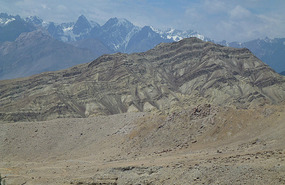
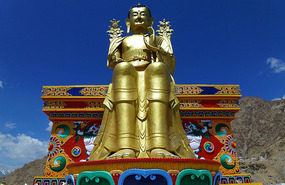
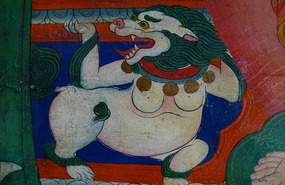
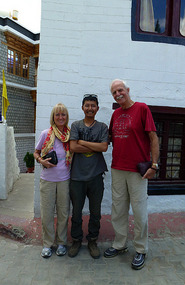
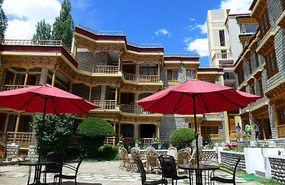
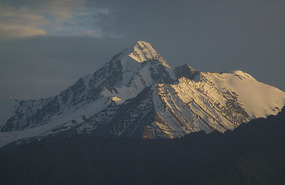
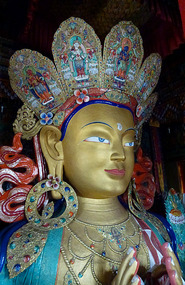

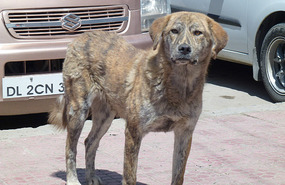

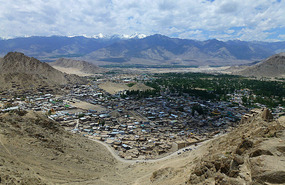
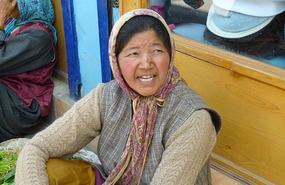
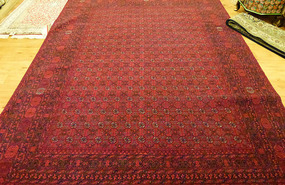



2025-05-22